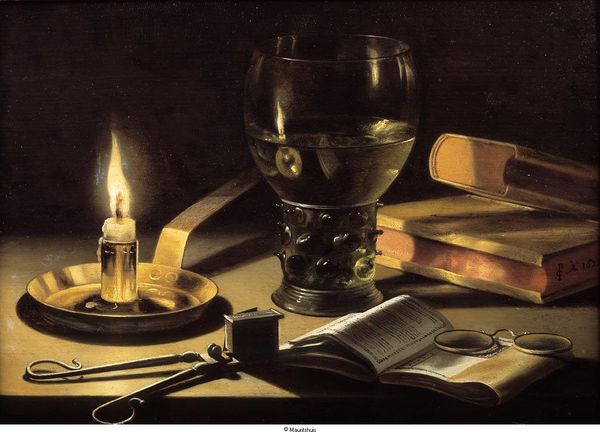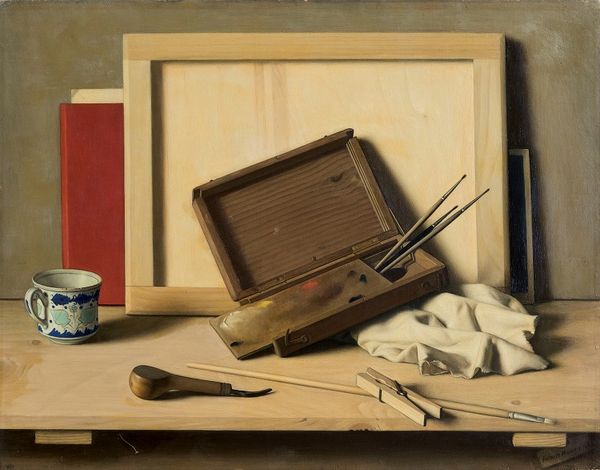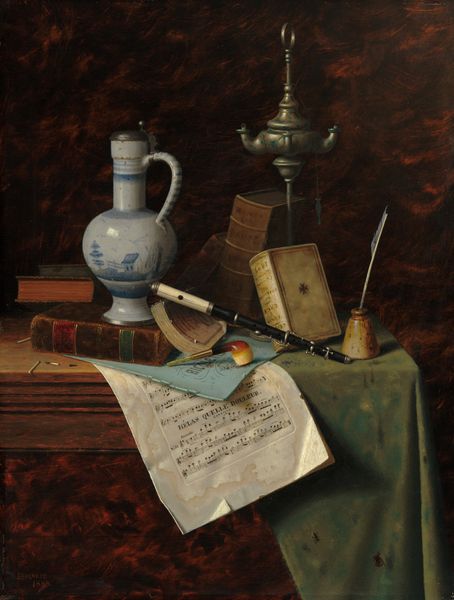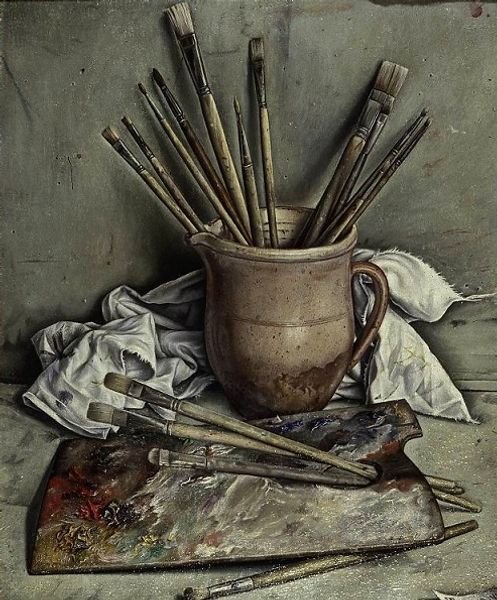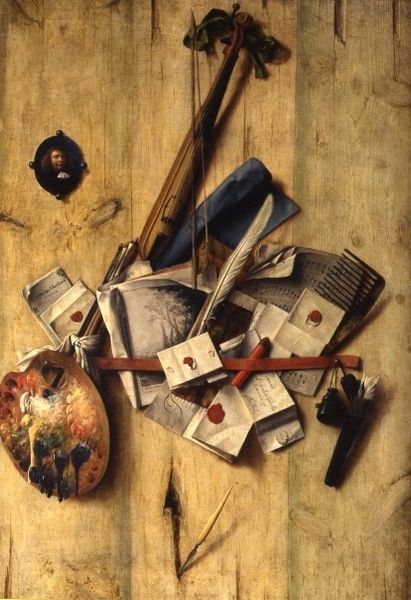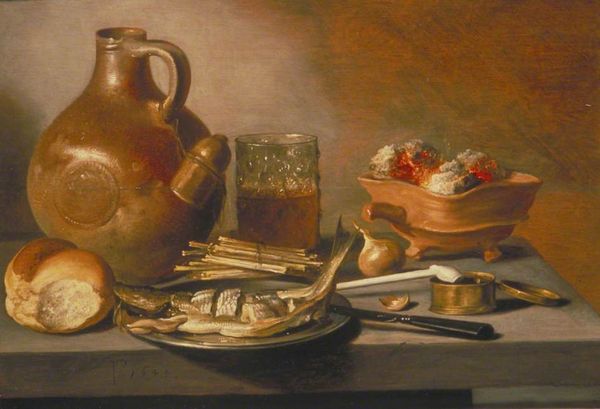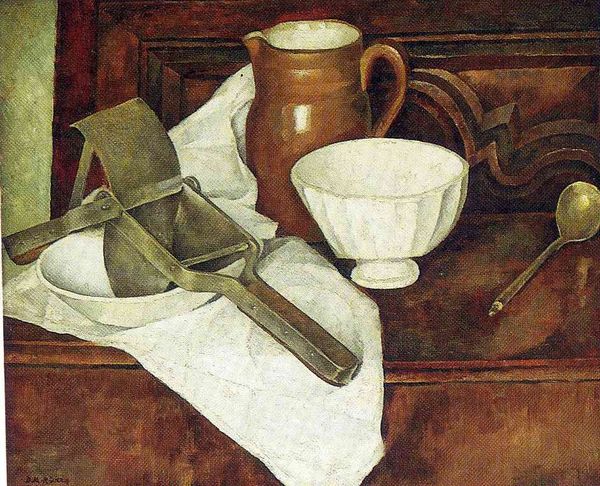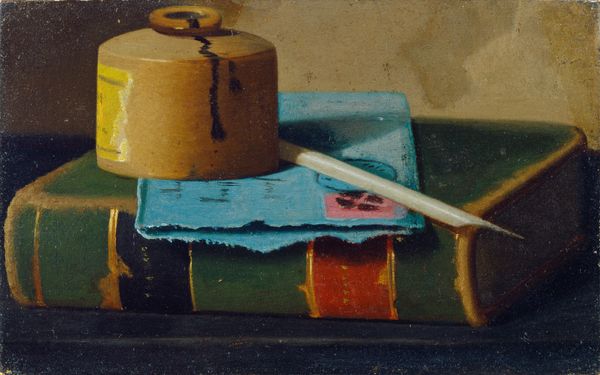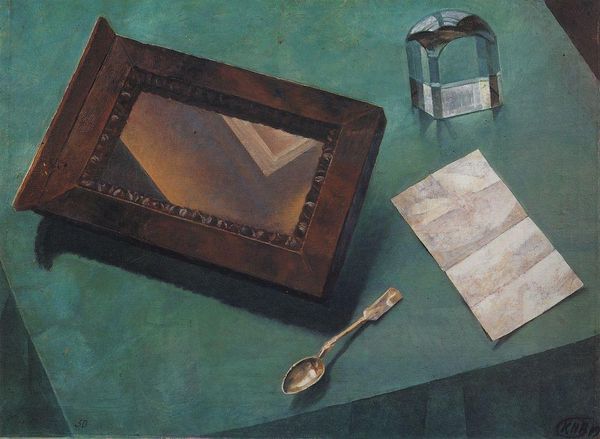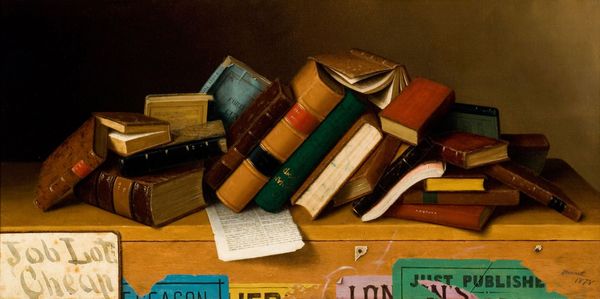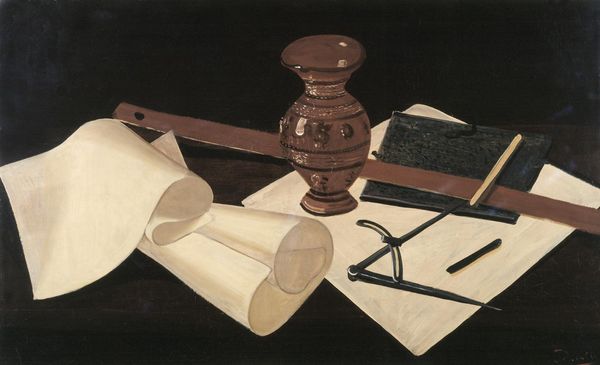
painting, oil-paint
#
still-life
#
painting
#
oil-paint
#
oil painting
#
genre-painting
#
realism
Copyright: Public domain
Curator: Welcome to this detailed still life by William Michael Harnett, created in 1880 and titled, "His Mug and His Pipe." Notice the items displayed: a pipe, matches, mug, and newspaper. What do you think? Editor: The immediate impression is of masculine leisure, quiet contemplation, perhaps a working man's moment of reprieve, but certainly coded through distinctly male objects. Curator: I would say that assessment holds true, particularly if we consider the socio-economic context of the late 19th century. Harnett painted these scenes depicting common, often mass-produced goods at a time when industrial production changed the availability and significance of consumer objects. The illusionistic trick of his brush gives value to items readily available, to some people. Editor: Absolutely, I agree, the artist uses oil paint to explore these accessible and domestic objects but elevates them by giving them this heightened realism and detailed materiality. The pipe’s worn finish, the slight staining on the mug, even the crumpled newspaper. These all become things we contemplate not just consume. This painting has value. The real is not always available to all, regardless of wealth status. Curator: Precisely. These objects invite discussion. The folded newspaper—is it incidental, or a signifier? The matches ready to be lit... are these stand-ins for the person they belong to? And if so, is Harnett critiquing or celebrating industrialism by immortalizing the objects born of its success? Editor: Perhaps neither. Instead, Harnett directs our gaze to the artistry of manufacturing; the materials extracted, processed, distributed, and assembled; to the labour needed to get to this final staging, a commoner’s luxury set on a wooden tabletop and painted in oil paint. Curator: That’s an astute observation about the painting. Editor: Thank you, my approach considers process. Perhaps, Harnett is immortalizing that instead. Curator: Fascinating how we've unearthed different readings within a deceptively simple still life. Editor: Indeed, still life, even at its most quotidian, becomes a space for considering greater economic forces at play.
Comments
No comments
Be the first to comment and join the conversation on the ultimate creative platform.
